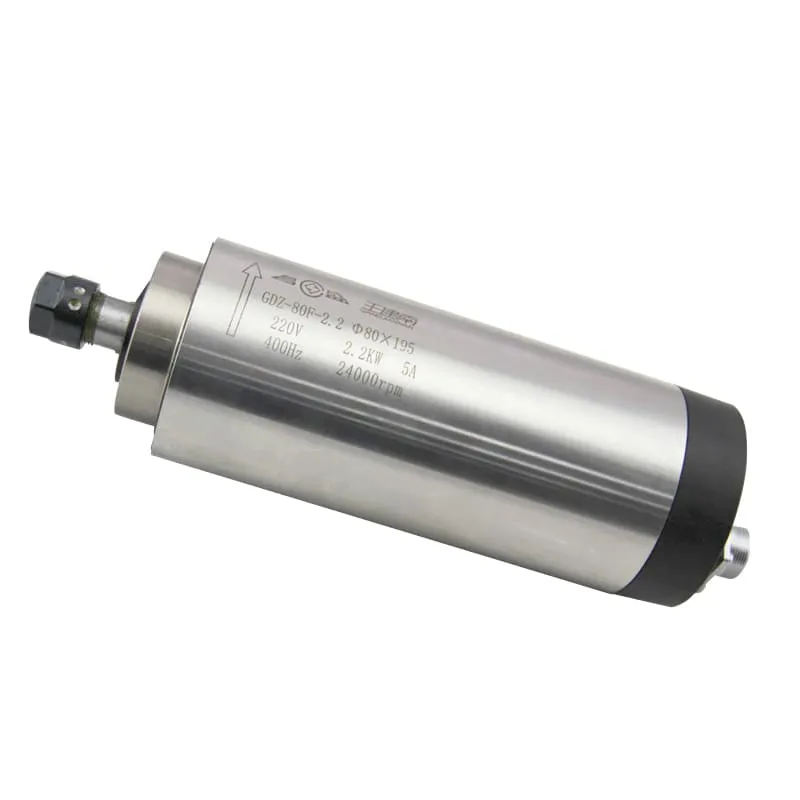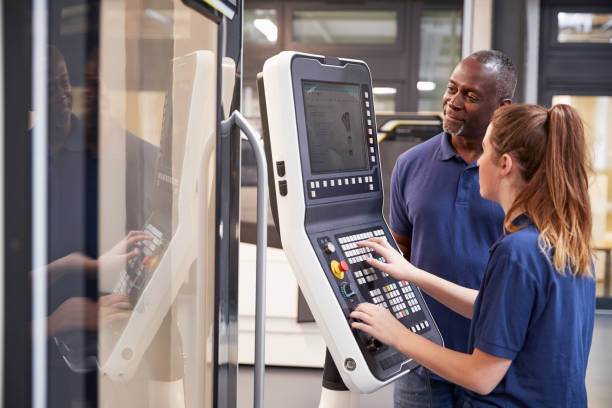Can You CNC Steel?
Yes, you can CNC (Computer Numerical Control) machine steel. Steel is a common and versatile material in CNC machining, widely used across various industries due to its strength, durability, and availability. This comprehensive guide will explore the process of CNC machining steel, covering techniques, tools, and best practices.
Understanding Steel as a CNC Material
Steel is an alloy of iron and carbon, often containing other elements to enhance specific properties. It’s popular in CNC machining because of its:
- High strength and hardness
- Good machinability (for many steel grades)
- Wide range of available grades and properties
- Cost-effectiveness compared to some other metals

A CNC machine suitable for cutting steel
CNC Machining Techniques for Steel
CNC Milling Steel
CNC milling is a common method for machining steel parts:
- Tool Selection: Use carbide or high-speed steel (HSS) end mills appropriate for the steel grade.
- Spindle Speed: Moderate speeds are typically used. A 2.2KW ER20 Air-Cooled Spindle can handle many steel machining tasks.
- Feed Rate: Adjust based on the steel grade and cutting tool.
- Depth of Cut: Varies based on the operation (roughing vs. finishing) and tool capabilities.
CNC Turning Steel
For cylindrical parts, CNC turning is often employed:
- Use carbide inserts or HSS turning tools.
- Ensure proper tool overhang to minimize deflection.
- Use appropriate cutting speeds and feeds for the steel grade.
CNC Router Cutting Steel
While less common, CNC routers can machine softer steels:
- Use a robust CNC router designed for metal cutting.
- Employ slower speeds and feeds compared to wood or plastic routing.
- Consider a more powerful spindle like the 3.5KW ER20 Air-Cooled Spindles for better performance.
Best Practices for CNC Machining Steel
- Coolant: Use appropriate coolant or cutting fluid to manage heat and improve tool life.
- Rigidity: Ensure your CNC machine and workholding are rigid to minimize vibration.
- Tool Life Management: Monitor tool wear and replace tools as needed.
- Chip Management: Use proper chip breaking techniques and ensure efficient chip evacuation.
Recommended Settings for CNC Cutting Steel
Settings vary based on the specific steel grade, machine capabilities, and tooling. Here are general guidelines:
| Parameter | Mild Steel | Stainless Steel |
|---|---|---|
| Cutting Speed | 300-500 SFM | 100-300 SFM |
| Feed Rate | 0.004-0.012 IPT | 0.002-0.008 IPT |
| Depth of Cut | Up to 0.1D* | Up to 0.05D* |
*D refers to the tool diameter
Tools for CNC Machining Steel
- End Mills: Carbide or HSS end mills, often with TiAlN or other coatings.
- Drill Bits: Cobalt or carbide drill bits for precise holes.
- Turning Tools: Carbide inserts for most turning operations.
- Taps and Threading Tools: For creating internal and external threads.
Applications of CNC Machined Steel Parts
- Automotive components
- Aerospace parts
- Industrial machinery
- Tool and die making
- Consumer products
Challenges in CNC Machining Steel
- Heat Generation: Steel can generate significant heat during machining.
- Tool Wear: Certain steel grades can cause rapid tool wear.
- Surface Finish: Achieving fine finishes may require multiple passes or special techniques.
- Machine Rigidity: Steel machining often requires more rigid setups than softer materials.
FAQ
1. Can a standard CNC router cut steel?
Most standard CNC routers are not designed for cutting steel. However, some robust CNC routers with appropriate modifications and proper tooling can machine softer steels.
2. What’s the best CNC machine for cutting steel?
CNC mills and lathes are generally best for cutting steel. For high-volume production, CNC machining centers are often used.
3. How do I choose the right cutting tools for steel?
Consider the steel grade, desired surface finish, and machining operation. Carbide tools with appropriate coatings are often a good choice for steel.
4. What coolant should I use when CNC machining steel?
Water-soluble coolants or cutting oils are commonly used. The choice depends on the specific steel grade and machining operation.
5. Can I CNC machine hardened steel?
Yes, but it requires specialized tools and techniques. EDM (Electrical Discharge Machining) is often used for very hard steels.
6. How does CNC machining steel differ from machining aluminum?
Steel generally requires slower cutting speeds, generates more heat, and causes more tool wear compared to aluminum. It also typically requires more robust machines and tooling.
Conclusion
CNC machining steel is a fundamental capability in modern manufacturing, enabling the production of precise, durable parts for a wide range of industries. While it presents challenges in terms of heat generation, tool wear, and machine requirements, these can be overcome with proper techniques, tools, and equipment.
Success in CNC machining steel comes from understanding the specific properties of the steel grade you’re working with, selecting appropriate tooling and machine settings, and implementing effective cooling and chip management strategies. Investing in quality CNC machines, like those with robust spindles and rigid construction, can significantly improve your results and efficiency when working with steel.
As with any machining process, safety should always be a priority. Proper training, use of safety equipment, and adherence to best practices are essential when CNC machining steel.
Whether you’re producing automotive parts, aerospace components, or custom machinery, mastering the art of CNC machining steel can open up a world of manufacturing possibilities. As CNC technology continues to advance, we can expect even more efficient and precise methods for machining steel, further expanding the capabilities of manufacturers across industries.

